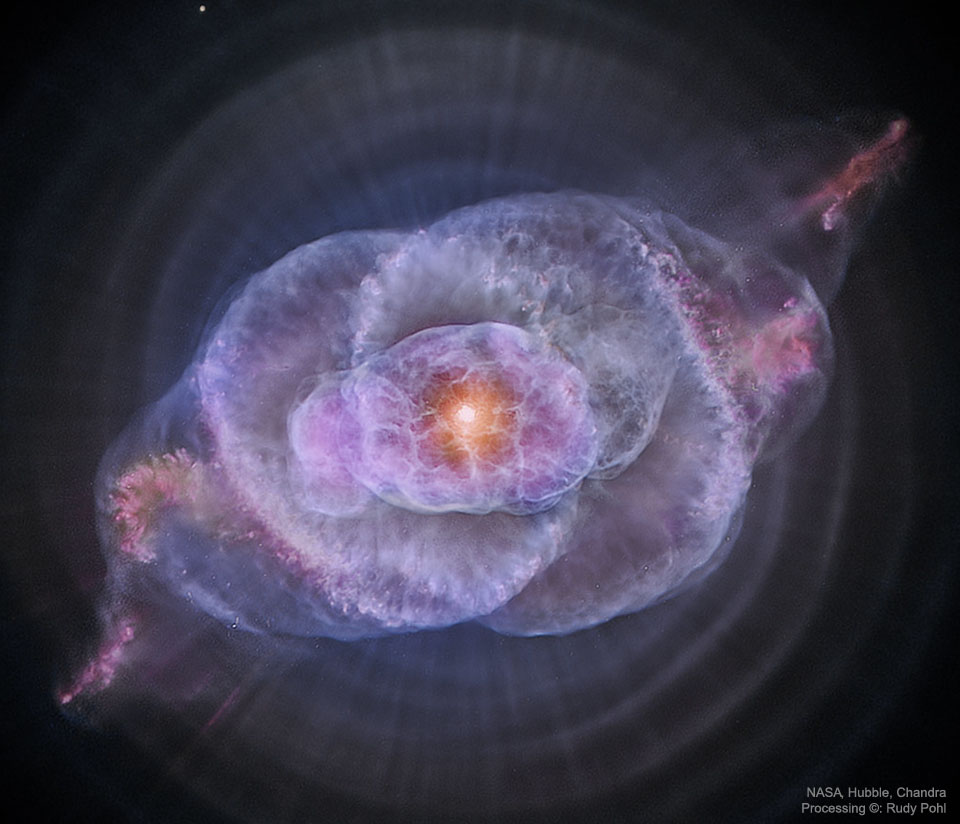2024年1月7日
The Cat’s Eye Nebula in Optical and X-ray
Image Credit: NASA, ESA, Hubble Legacy Archive; Chandra X-ray Obs.;
Processing & Copyright: Rudy Pohl
Explanation: To some it looks like a cat’s eye. To others, perhaps like a giant cosmic conch shell. It is actually one of the brightest and most highly detailed planetary nebula known, composed of gas expelled in the brief yet glorious phase near the end of life of a Sun-like star. This nebula‘s dying central star may have produced the outer circular concentric shells by shrugging off outer layers in a series of regular convulsions. The formation of the beautiful, complex-yet-symmetric inner structures, however, is not well understood. The featured image is a composite of a digitally sharpened Hubble Space Telescope image with X-ray light captured by the orbiting Chandra Observatory. The exquisite floating space statue spans over half a light-year across. Of course, gazing into this Cat’s Eye, humanity may well be seeing the fate of our sun, destined to enter its own planetary nebula phase of evolution … in about 5 billion years.
Free APOD Lecture: January 9, 2024 to the Amateur Astronomers of Association of New York
Tomorrow’s picture: Venus year around
猫眼星云: 可见光及X射线波段的景观
影像处理: NASA, ESA, Hubble Legacy Archive; Chandra X-ray Obs.;
影像处理与版权: Rudy Pohl
说明: 有人认为它形似猫眼,不过也有人认为,它或许较像庞大的海螺壳。它其实是一颗类太阳恒星,在生命短暂壮丽末期抛出的气体所织就的,也是现知最明亮结构最清晰的行星状星云之一。这团星云滨死的中心星,或许在一系列规律的脉动里,抛出了外层气壳,形成星云外围的同心壳层结构。然而,美丽复杂但对称的美丽内围结构,到底是如何形成的,目前仍不全然了解。这幅主题影像组合了经过数位锐化的哈勃太空望远镜影像,以及钱德拉天文卫星拍摄的X射线影像。这座漂浮在太空中的精美雕塑,宽约半光年。当人们望进这只猫眼时,或许同时也预见了太阳的宿命,有一天,它会演化到行星状星云阶段…只不过这得再过50亿年左右。
免费APOD讲座: 2024年1月9日,纽约业余天文学家协会
明日的图片: Venus year around







